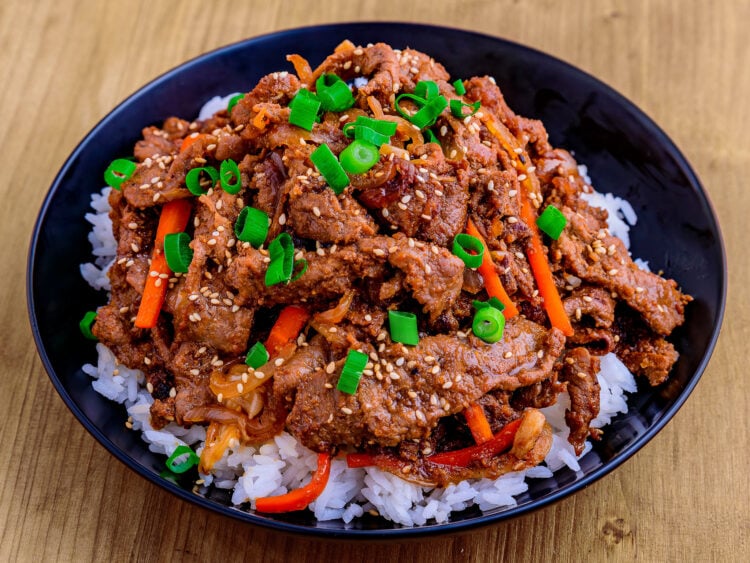A flavorful beef bulgogi recipe that beats the restaurant version for an authentic Korean BBQ experience at home
What is beef bulgogi?
Bulgogi (불고기, literally “fire meat”) is usually prepared with thin, tender slices of beef, though pork or chicken show up in some variations. In practice, if a recipe simply says bulgogi, it almost always means beef. By contrast, my Osam bulgogi recipe pairs pork with squid
Celebrated as one of Korea’s signature dishes, bulgogi has been enjoyed for centuries. Over time each region has tweaked the technique, creating a wide range of styles.
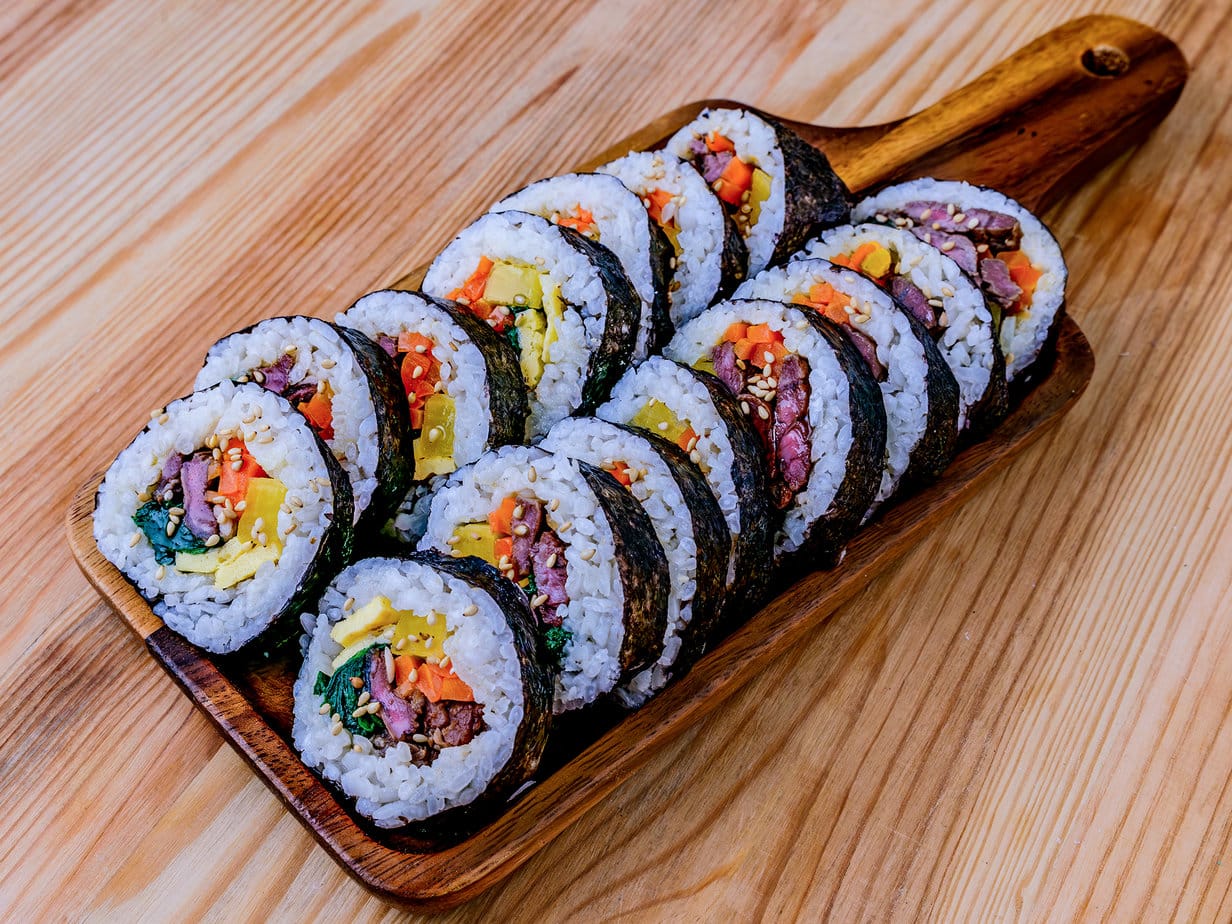
The different types of Bulgogi
- Gwangyang Bulgogi : Thin slices of beef are grilled over hot charcoal without any advance marinade; they are brushed with sauce only seconds before they hit the grill. The meat is then wrapped in lettuce or perilla leaves with grilled mushrooms and served with Korean plum tea and cinnamon punch.
- Eonyang Bulgogi : Eonyang-style bulgogi starts with marinated beef that is chopped, pounded, and shaped into thick patties. They are cooked all the way through, giving them a crisp crust and a smoky, juicy center. This version is less sweet than most and is often paired with a green-onion sauce and assorted side dishes.
- Seoul Bulgogi : Seoul-style bulgogi is cooked on a dome-shaped copper plate in a savory broth along with green onions, mushrooms, onions, and glass noodles. The broth soaks into everything and deepens the flavor.
- Bulgogi Jeongol (Stew) : A winter favorite, this hearty stew starts with marinated beef that is cooked with fresh vegetables and broth in a shallow pot. Sweet-potato noodles are usually added to soak up the fragrant stock.
- Bulgogi Deopbap (Bulgogi Rice Bowl) : Deopbap means “covered rice”, and in this dish the rice is topped with bulgogi and vegetables. The key is to add extra sauce while cooking the meat so it can drizzle over the rice. This sauce is often made with anchovy or beef stock, turning the bowl into a balanced meal that marries the sweet flavor of bulgogi with fluffy rice.
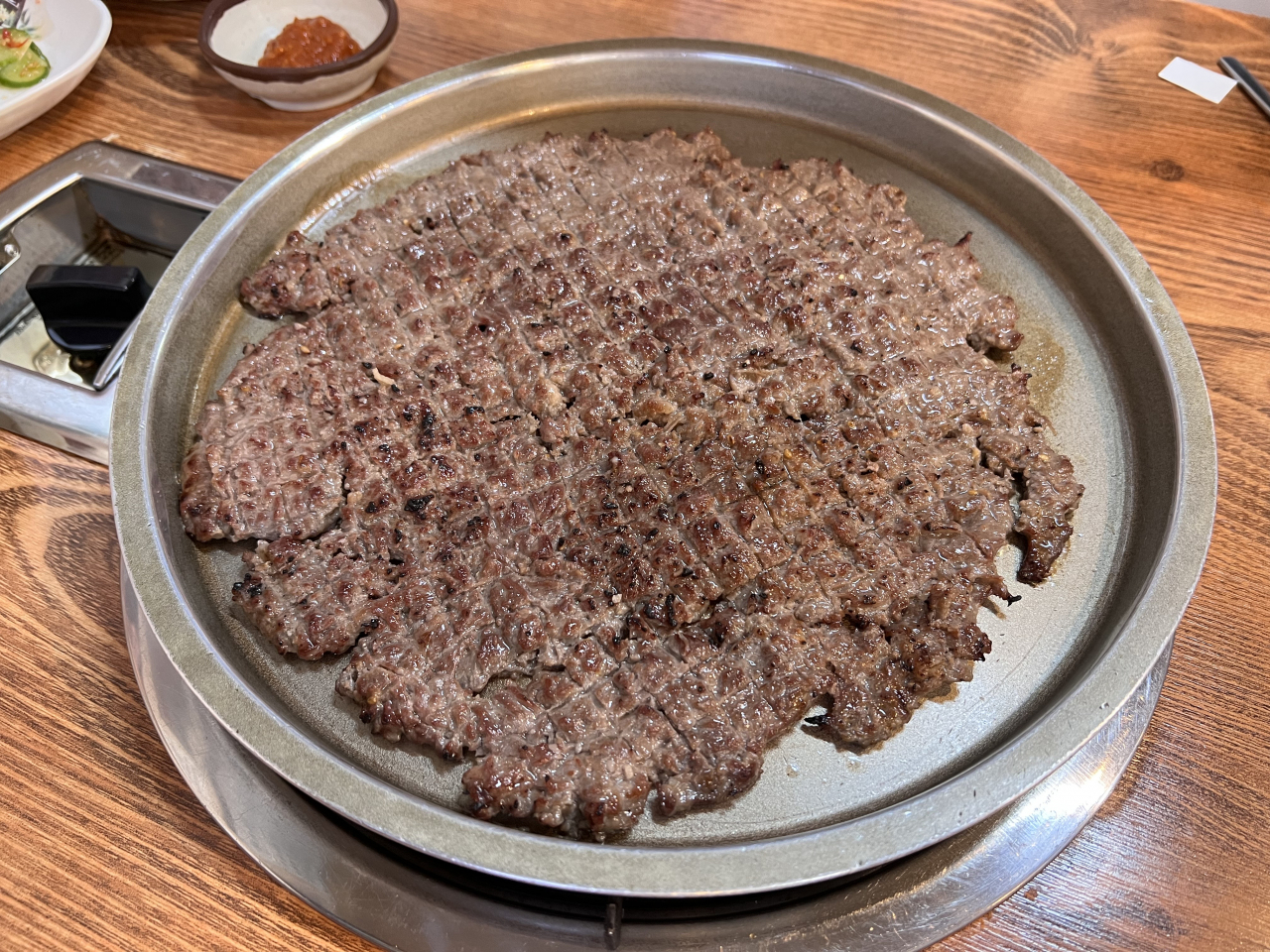
The rise of Korean barbecue
In recent years, Korean cuisine has exploded in popularity across French-speaking countries, and all-you-can-eat Korean barbecue spots are popping up everywhere. Bulgogi has therefore become a staple of Asian cuisine here, so I had to share my go-to recipe.

Bulgogi sauce
The sauce that doubles as the marinade is the heart of this traditional dish. It blends a range of classic Asian ingredients, each adding its own layer of flavor.
Soy sauce supplies deep umami, brown sugar and mirin lend gentle sweetness, and Asian pear or red apple adds a light fruity note. Fresh garlic and ginger cut through with a bright, spicy kick, while black pepper and toasted sesame oil round everything out.
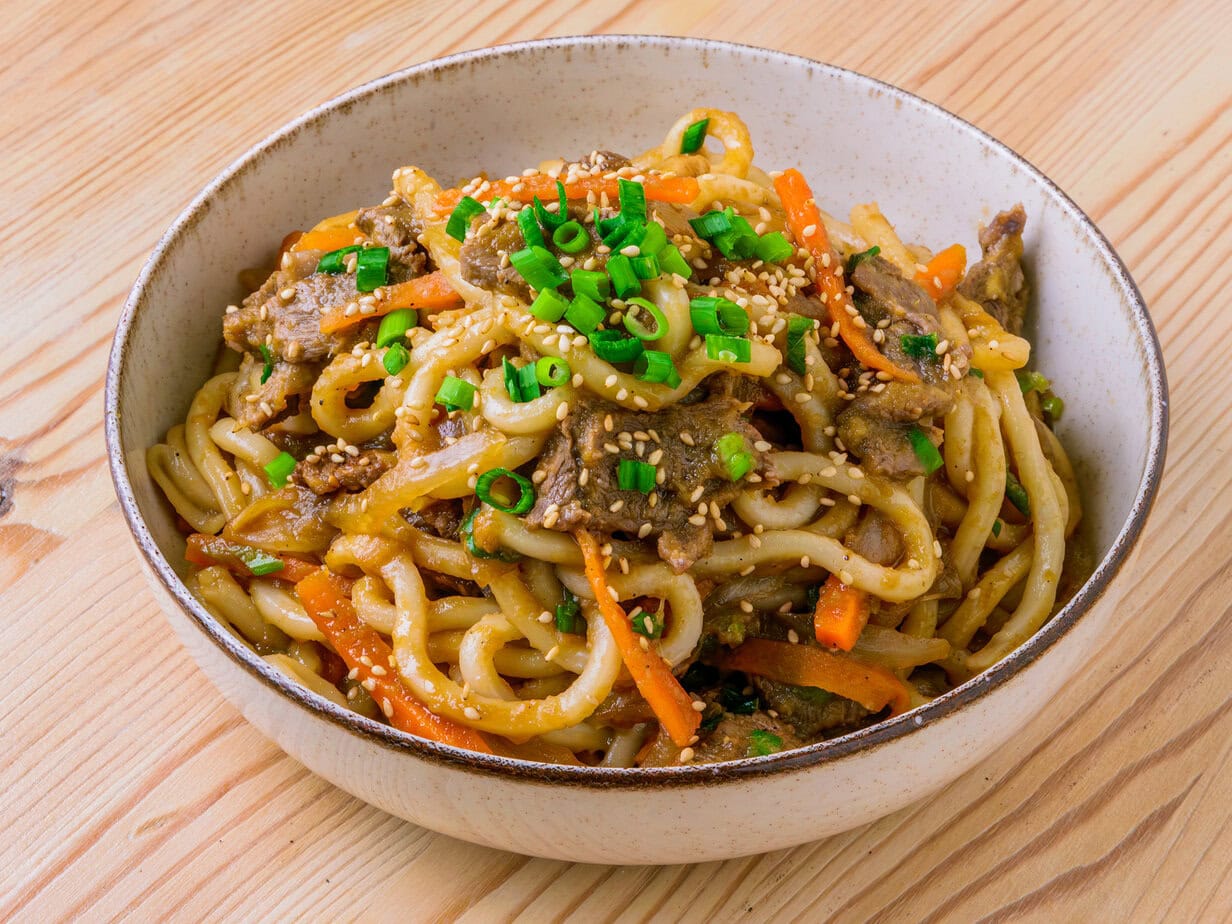
The marinade clings to every slice, letting the meat soak up all those layers of flavor. This long bath is what gives bulgogi its signature tenderness and complex, balanced taste.
How do you get tender beef?
Korean cooks often rely on fruit to tenderize and sweeten the meat. The classic choice is Nashi pear, but it can be hard to find outside Korea.
So I turn to red apples like Pink Lady or Fuji, blended with a bit of pureed onion. The combo works wonders and is the same trick used in my spicy Korean stir-fried pork
Kiwi or pineapple will also tenderize quickly, but you need to use them sparingly.
Because these fruits are so potent, leaving the meat in the marinade too long can turn it mushy or pale. You could use the baking-soda method, but I do not recommend it here.
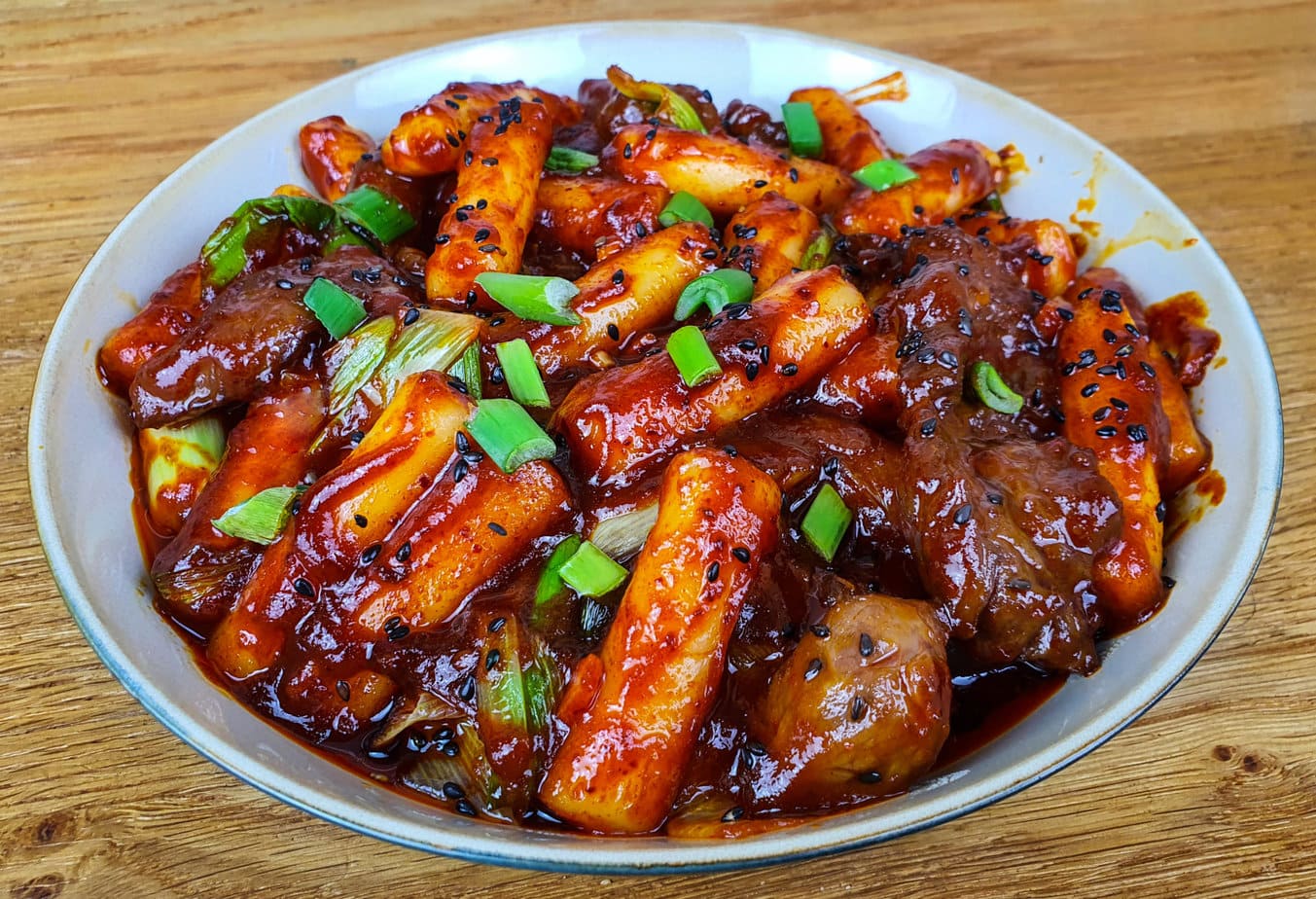
How to cook Beef Bulgogi?
You have two main ways to cook bulgogi, each with its own character: in a skillet with vegetables or on a grill without them.
In a pan, the meat cooks with the vegetables and releases a savory juice that is perfect spooned over hot white rice. This method is also great for meal prep.

On a barbecue the juices drip through the grate, so you do not get a sauce, but the kiss of burning charcoal adds an unbeatable smoky flavor and that true Korean barbecue vibe.
What to serve with Beef Bulgogi?
At a Korean barbecue spread you will often see it alongside tteokbokki, kimchi, wakame salad, a vegan japchae, and even samgyeopsal
I did not reinvent the wheel; this recipe is adapted from the English-language blog “My Korean Kitchen,” and I cannot stop making it. You have to try it.
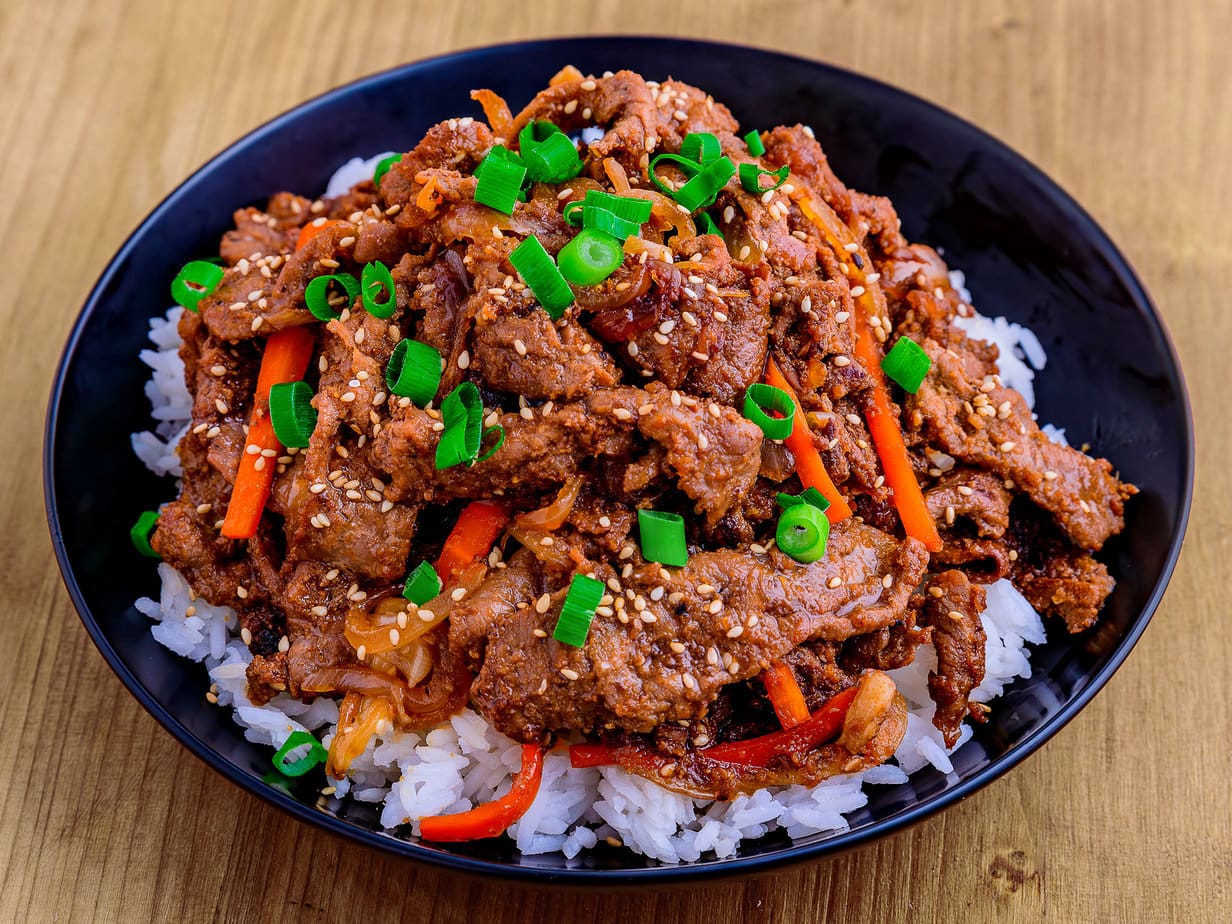
Authentic Korean Beef Bulgogi
Ingredients
Beef
- 800 g very thinly sliced beef Ideally 2–3 mm thick
- 1 onion, peeled and thinly sliced
- 2 stalks green onions thinly sliced
- 0.5 carrot optional, peeled and thinly sliced
- 1 tablespoon sesame oil
- 1 tablespoon sesame seeds
- 1 tablespoon neutral oil
Marinade
- 6 tablespoons light soy sauce
- 3 tablespoons brown sugar
- 2 tablespoons mirin
- 1 red apple
- 0.5 onion
- 1 tablespoon minced garlic
- 1 teaspoon minced ginger
- 1 pinch ground black pepper
To serve
- thinly sliced green onions
- white sesame seeds
- steamed white rice
Instructions
- Combine all the marinade ingredients in a blender or food processor and blend until perfectly smooth. Set aside.

- Place the beef in a large bowl and pour the marinade over the top. Gently massage the meat so every slice is coated.
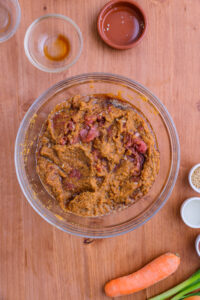
- Drizzle in the sesame oil and toss to combine.
- Cover with plastic wrap (or transfer to an airtight container) and refrigerate for at least 4 hours, preferably overnight.
- Heat a large skillet over medium-high heat and add the neutral oil.
- Add the marinated beef along with the onion, green onions, and carrot. Stir-fry for 3–5 minutes, or until the meat is just cooked through. Sprinkle in the sesame seeds and give everything a quick toss.
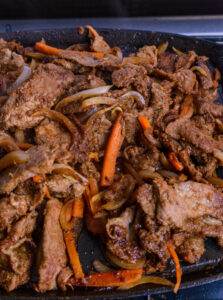
- Serve hot over steamed rice, garnished with extra green onions and sesame seeds. Add any of your favorite Korean side dishes on the side.
